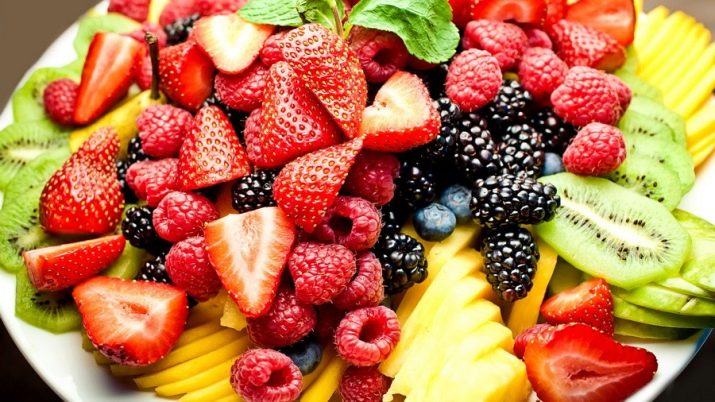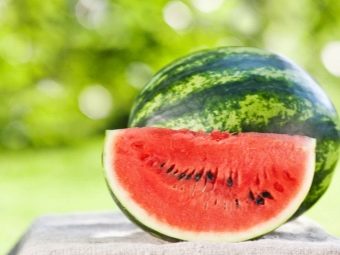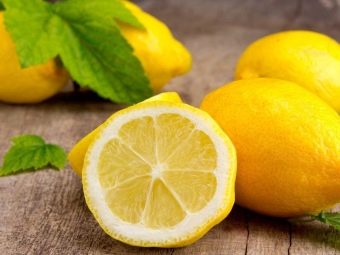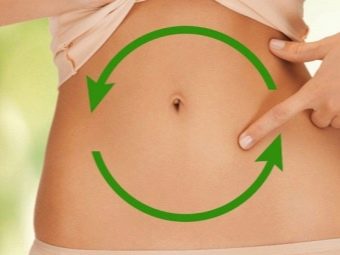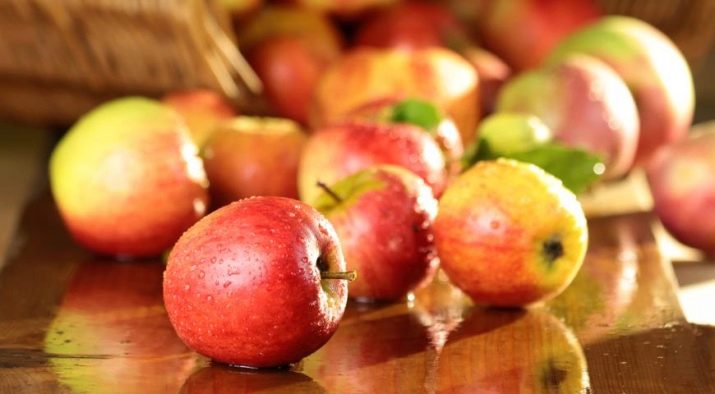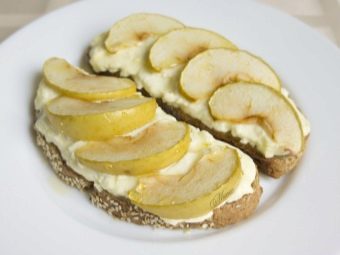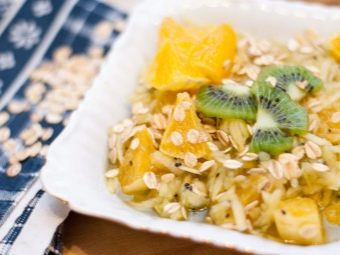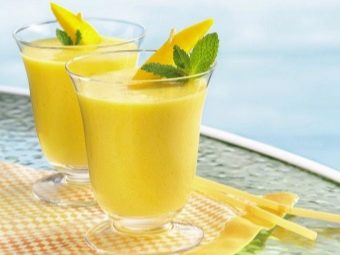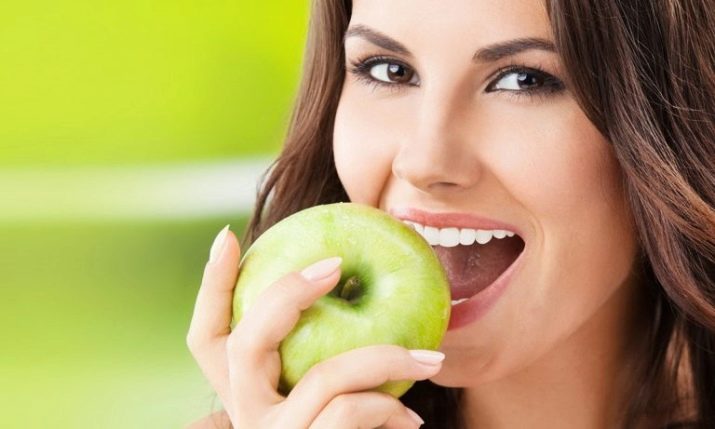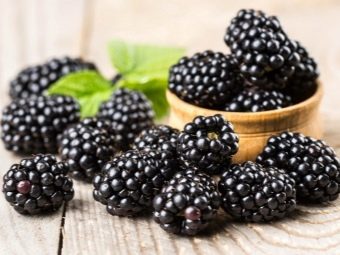What are the most low-calorie fruits, vegetables and berries?
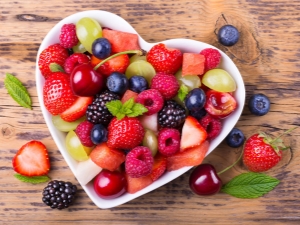
Fruits and berries - the most delicious and healthy pleasure provided by nature.They are rich in vitamins, micro and macronutrients, other beneficial substances, beneficially affect our intestines, circulatory and nervous systems. Enumerate the beneficial effects of fruit can be long. Today we will talk about the low-calorie gifts of nature.
Low calorie foods
All fruits and vegetables are traditionally considered low-calorie. This is not entirely true, as ripened bananas, apples of sweet varieties, grapes and many exotic fruits contain quite a lot of calories.
Top-list of the lowest-calorie fruit crowned with watermelon. This large berry contains from 25 to 30 kcal per 100 grams of weight. In addition, it has other useful properties for the human body:
- good diuretic;
- improves the digestive tract;
- helps the conclusion of harmful cholesterol;
- helps to cleanse the liver of toxic substances;
- dissolves and removes stones from the kidneys;
- after antibiotic therapy helps our body recover.
The next are citrus fruits. In a lemon per 100g of its mass is only 31 kcal. It is commonly known as a source of vitamin C, but also has other advantages.
- It enhances immunity, is an auxiliary and prophylactic agent in the treatment of colds.
- It helps to strengthen the walls of blood vessels, raises the tone, it is extremely useful for asthmatics.
100 g of mandarins, oranges, grapefruit contain quite a bit - 35 or 38 kcal. These subtropical fruits have the ability to burn excess fats. They also:
- contain large amounts of carbohydrates;
- their action is directed to the restoration of immunity;
- help in normalizing sleep;
- strengthen blood vessels;
- produce a diuretic effect.
Pear also belongs to low-calorie fruits (43 kcal per 100g). It has a high content of various vitamins and iodine (in pits). It has the following useful qualities:
- helps in the fight against insomnia;
- helps to restore intestinal microflora;
- it is used for inflammation of the genitourinary system;
- positive effects on important organs such as the heart and liver;
- after heavy physical exertion, training relieves pain in tired muscles.
Apricot (44 kcal) is a tasty way to get beta carotene, fiber, phosphorus. There is an opinion, supported by professionals, that it helps in the prevention of malignant tumors. In addition, its use:
- strengthens the myocardium and bones;
- has a preventive effect, prevents eye diseases;
- provides a balance of all fluids in the body;
- good effect on the digestive tract, helps with constipation;
- helps to strengthen memory.
Calorie plum - 45 kcal, its laxative effect is known to many. This fruit is:
- normalize metabolism;
- thin the thick blood;
- makes strengthening of walls of vessels, reduces the likelihood of thrombosis;
- removes bad cholesterol;
- treats diseases of the urinary system.
Kiwi give a feeling of fullness, although 100 g of the product contains only 46 kcal. The fruit has a huge amount of various vitamins, also:
- increases the body's defenses;
- normalizes high blood pressure;
- prescribed to people to fight benign tumors;
- has the ability to neutralize the negative effects of nitrates.
Medlar (47 kcal) is a southern fruit, is rather unknown. Possesses such useful qualities as:
- fights inflammation;
- has a preventive effect in the treatment of tumors;
- a positive effect on the work of the lungs, kidneys, liver;
- enhances the anti-stress effect;
- reduces the negative effects of allergies.
Apples of different varieties (47-51 kcal) are characterized by a low glycemic index (GI), rich in Ca, P, Fe, pectins and other elements that are beneficial to our body. These widespread fruits are:
- promote cleansing of the blood, lymph and blood vessels;
- have antioxidant properties;
- prevent the formation of kidney stones and bladder;
- help the work of the heart muscle;
- restore the functioning of the digestive tract, remove toxins from the body.
Pineapple (48 kcal) contains bromelain, an enzyme that burns fat. A variety of diets based on it are very popular. This exotic fruit also:
- supports and improves vision;
- useful for normalizing the state of the nervous system;
- strengthens the walls of blood vessels;
- improves the digestive tract;
- reduces joint pain;
- slows the aging process in the body.
Table number 1 calorie some fruits.
Title | The number of kcal per 100 g |
Watermelon | 25-30 |
Lemon | 29-31 |
Grapefruit | 32-42 |
Pomelo | 32 |
Orange | 38-47 |
Mandarin | 38-53 |
Peach | 39 |
Chinese pear (nihonashi) | 40 |
Pear | 43-57 |
Apricot | 44 |
Plum | 45 |
An Apple | 47-51 |
Medlar | 47 |
Papaya | 48 |
Garnet | 49-52 |
Ways of use
Of course, it is most useful to eat raw fruits and berries or to prepare freshly squeezed juices from them - this is how the most valuable elements are preserved.
The traditional fruit dish is salad. At the same time they do not need to be subjected to heat treatment (boil, fry), therefore, they will retain all the vitamins and beneficial substances. Citrus, pineapple, apples, pears can be cut into small pieces, season with yogurt without sugar, sprinkle with cinnamon and woo-a-la - a tasty and healthy salad is ready. Slightly modified (more nourishing) version - pineapple and mandarin cut into pieces, sprinkled with 50-100 grams of grated hard cheese, and then poured with natural yogurt.
You can treat yourself to fruit sandwiches for breakfast. Crush on the grater with large holes there are fruits (kiwi, peaches, apples, pears), cut tangerines, oranges. Add low fat cottage cheese, mix all the ingredients. Dip bread slices soak in milk. Put the mixture on the softened bread. Send to the oven for 10-11 minutes.
There are many more recipes for low-calorie dishes.
- Fruit variant salad "Metelka". Ingredients: kiwi, green apple, tangerine (orange), a little “Hercules” and honey in liquid form. Apple and kiwi finely chopped, tangerine is divided into slices. A few tablespoons of oatmeal fried without oil, added to the fruit. Mixed with a spoon of honey, you can with a handful of nuts.
- Watermelon gazpacho. A piece of watermelon weighing up to 1.5 kg is cut off the crust, seeds are removed, and the remaining red flesh is whipped in a blender. Two medium sized tomatoes are skinned, vegetables are mixed with a whipped watermelon. Finely chopped cucumber, green onions and together with spices (mint, basil) are added to the resulting mass. Put in the fridge for 4-5 hours. Then get, salt, pepper to taste. Can be served with sour cream or cheese.
- Summer cold soup. A quarter of a kilogram of any fruit (plums, apricots, apples) is cut into pieces, add two spoons of fried wheat bran, pour over low-fat kefir.
- Melon-pear cocktail. A piece of fresh ginger root is placed on the fruit, taken in the ratio of 1: 1. Everything is ground with a mixer and immediately put on the table.
- Delicious cottage cheese and peach dessert. Ingredients: 100 g low fat cottage cheese, 200 g peaches, 7 g gelatin. Peaches are cut into small pieces, mixed with curd tipped through a sieve. Gelatin is added to peach juice, this mixture is poured into a saucepan and slowly, without boiling, heated to completely dissolve the grains. After the jelly is mixed with peach and cottage cheese billet, laid out in a form for dessert and cleaned for an hour in the refrigerator.
Recommendations for use in losing weight
When and how to eat fruits and berries? It is best to use them for about half an hour or an hour before meals. Digestion of fruits and berries is much faster than more dense food. If you leave them for dessert (as was the custom for a long time), you can provide yourself with uncomfortable sensations in the stomach, increased gas formation and other unpleasant effects.
To raise the tone and get a charge of energy for the whole day, drink orange juice half an hour before breakfast, eat a tangerine. Apples can be eaten before and after meals.If you were served fruit for dessert, eat them in half an hour - 40 minutes after the main courses.
Eliminate from the diet very sweet fruits. All fruits and berries in one or another quantity contain fructose - natural sugar. In large quantities, it is harmful not only to your figure, but also can affect health (if you are prone to metabolic disorders).
Table number 2. Low-carb fruits and berries.
Title | Carbohydrate content per 100g |
Avocado | 1,84 |
Blackberry | 4,81 |
Raspberries | 5,44 |
Strawberry, honey melon | 5,68 |
Coconut (pulp) | 6,23 |
Lemon | 6,52 |
Watermelon | 7,15 |
Peach | 8,05 |
Cranberry | 8,37 |
Apricot | 9,12 |
Plum | 10,02 |
Apples | 10,81 |
Kiwi | 11,66 |
Blueberries | 12,09 |
Top 20 foods with a minimum calorie, see the following video.

